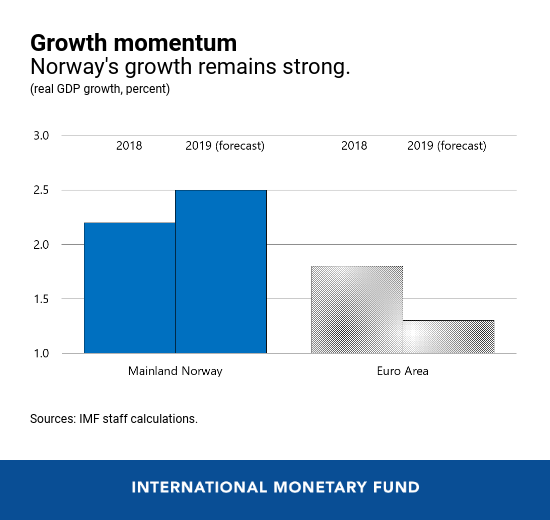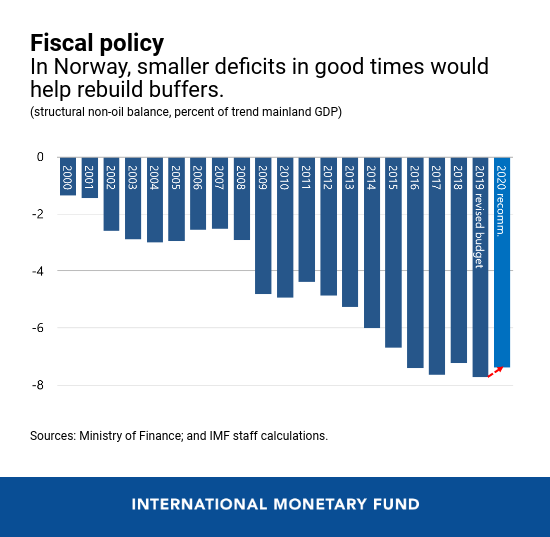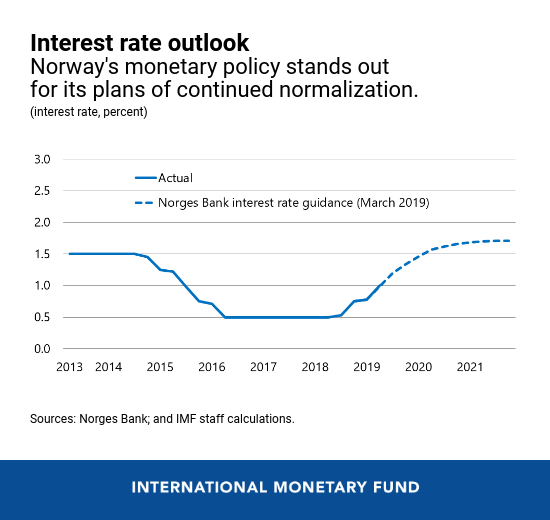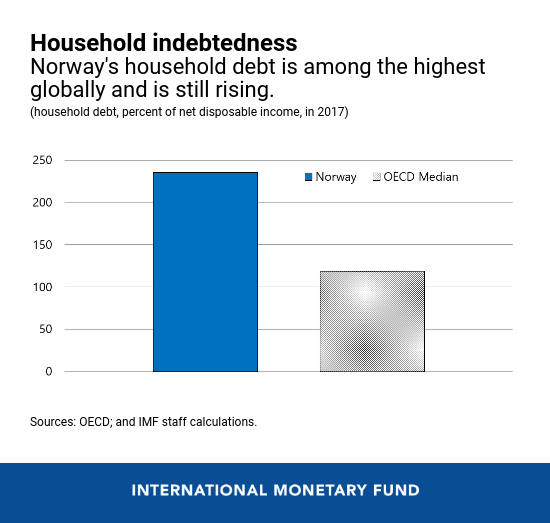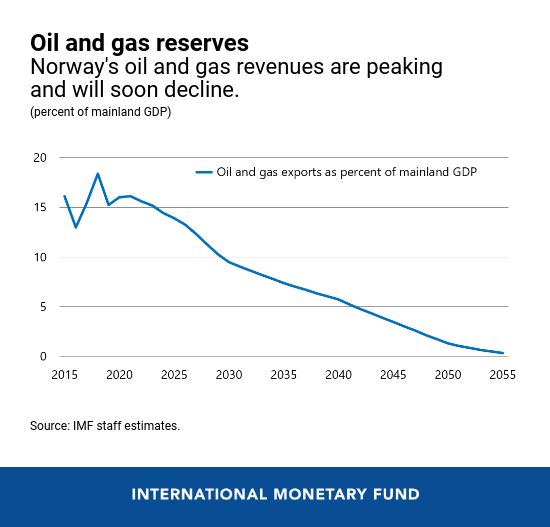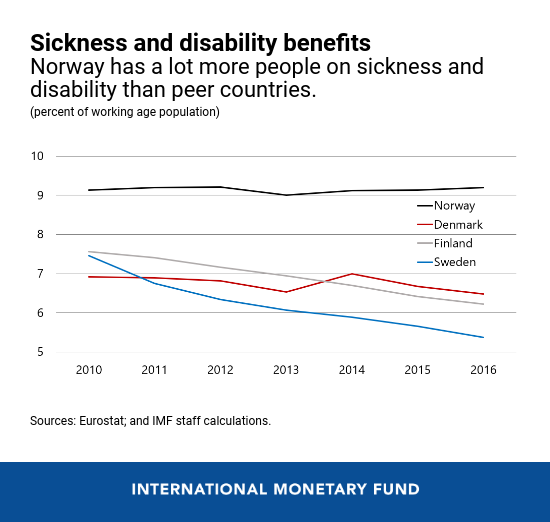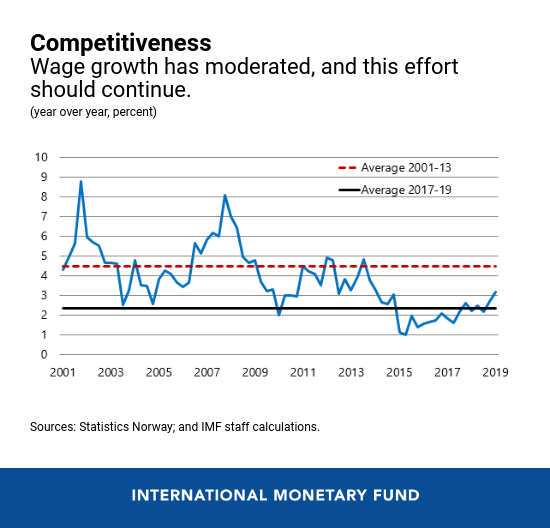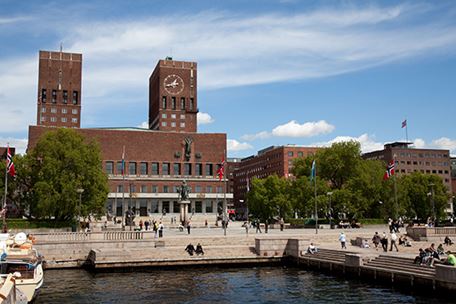
Radhus in Oslo, capital of Norway. (Photo: Kim Kaminski/Alamy Stock photo)
Norway’s Economic Outlook in Seven Charts
June 12, 2019
Norway's economy has performed well over the past year, especially compared to its neighbors. It is enjoying low unemployment and a broadly neutral budget, while its economy continues to grow. Given its strong momentum, now would be the ideal time for the country to address long-term challenges, suggests the IMF in its latest assessment of the Norwegian economy. Here are seven charts that tell the story.
Related Links
- Growth in many advanced economies has slowed, but Norway’s economy
continues to expand strongly. The weaker krone is helping exporters, low
unemployment is boosting incomes, and oil prices remain materially above
break even levels, supporting investment. Although global trade tensions and
uncertainty about European growth cloud the horizon, Norway’s outlook
remains positive.
-
In good times, it is important to avoid complacency. On fiscal policy:
in recent years, the budget has been broadly neutral, neither adding nor
subtracting from economic growth. This marks an improvement from the past,
when the deficit kept rising even when growth was healthy. However, in the
current upturn there is a strong case for reducing the deficit. Smaller
deficits now would generate fiscal buffers to counteract the next slowdown.
-
Low unemployment and rising wages are pushing inflation higher, leading
Norway’s central bank, Norges Bank, to hike interest rates twice in the
last nine months. How fast should the central bank lift rates going
forward? Raising rates too slowly could lead to high inflation, while
hiking too aggressively could expose households to sharp increases in
interest rates. In our view, the tightening projected by Norges Bank
strikes the right balance between these risks.
- House prices had been growing too fast until last year, raising concerns
about disruptive price falls. Since then, house price gains slowed, and
valuations now appear less stretched. But Norwegian households still have
one of the highest debt levels globally, and indebtedness keeps rising. For
these reasons, mortgage regulations should not be relaxed. Developments in
commercial real estate should also be monitored, as valuations appear
stretched, notably in Oslo’s prime segment.
-
Good times provide the ideal opportunity to address longer-term
challenges. In the future, oil and gas revenues are expected to drop, as
reserves are progressively depleted. Simultaneously, pensions and
health-related costs will continue to climb because of aging. These two
forces imply that over time Norway’s budget will face increasingly hard
choices, which will require finding new sources of revenue or savings to
accommodate new spending.
-
Sustaining high living standards as the population ages will require
expanding the labor force as much as possible. Reforming sickness and
disability benefits is a priority. Compared to other Nordic countries, a
significantly higher share of Norwegians is on these programs and not
working. Social partners will soon convene to discuss the reform proposals
of an expert commission. In the IMF's view, these recommendations are a good
starting point for a reform.
-
As the economy continues to transition away from oil and gas, other
sectors will have to become more competitive. The weak kroner has helped,
but this won’t be enough on its own. Continued wage moderation, underpinned
by a sense of shared trust and responsibility, will also be needed.








